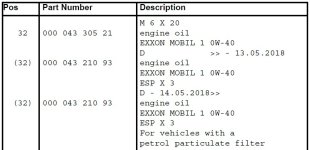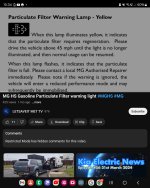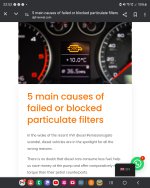Porsche introduced GPF for the 2019 model year with production beginning in September 2018 (see https://newsroom.porsche.com/en/inn...er-martin-werner-christophorus-388-16349.html). Interestingly, the parts list for the 718 shows the oil spec for all models changing in May 2018:

The above is from the latest 718 parts list available from the Porsche UK website (dated 19.07.2018). Although the particulate filter is mentioned on this page (section 104-005 Engine Lubrication), there is no other reference to the filter anywhere else in the file.
From Dave's earlier posts, it seems like there have been a number of revisions to emissions related parts, and possibly software, subsequent to the introduction of GPF. Because emissions failures are environmental rather than safety related, there would be no need for a recall notice in many markets. Extended warranty claims are not assessed or paid by Porsche themselves, but by the insurance underwriters for the plan. I doubt if they will pay out on failures due to a design defect, leaving Porsche themselves to fix the issue, or not in this case.

The above is from the latest 718 parts list available from the Porsche UK website (dated 19.07.2018). Although the particulate filter is mentioned on this page (section 104-005 Engine Lubrication), there is no other reference to the filter anywhere else in the file.
From Dave's earlier posts, it seems like there have been a number of revisions to emissions related parts, and possibly software, subsequent to the introduction of GPF. Because emissions failures are environmental rather than safety related, there would be no need for a recall notice in many markets. Extended warranty claims are not assessed or paid by Porsche themselves, but by the insurance underwriters for the plan. I doubt if they will pay out on failures due to a design defect, leaving Porsche themselves to fix the issue, or not in this case.












